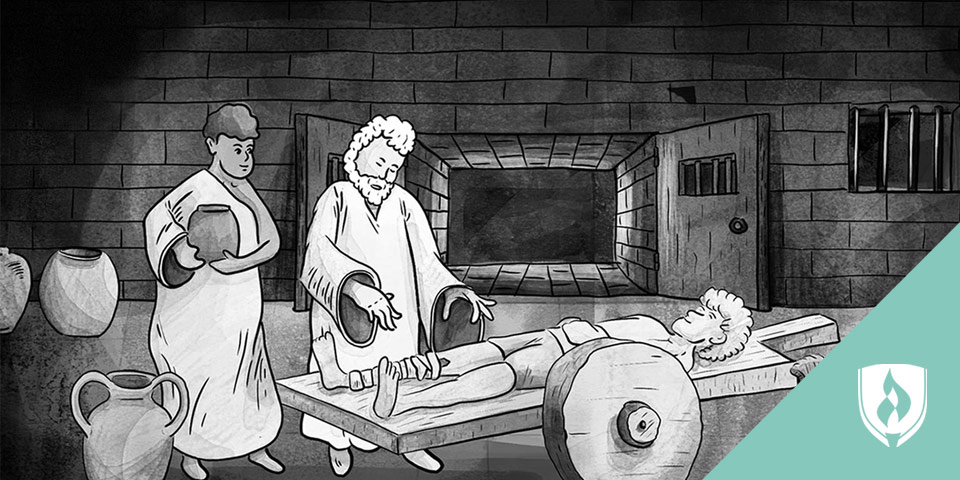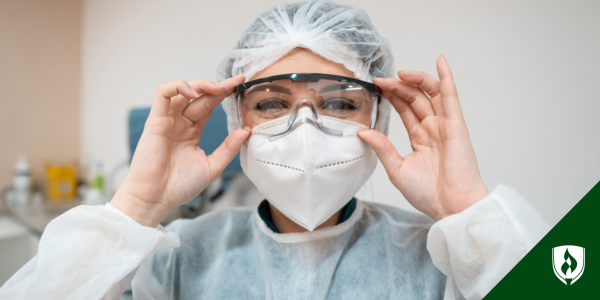
Picture a surgical scene of today. Sterile room, harsh bright lights. The monitors beep to let the surgical team know you’re alive. All you can see are the eyes—and only the eyes—peeking out from the mass of scrubs, gloves and caps.
If you should ever undergo surgery in your lifetime, you can rest soundly knowing that your experience will be virtually pain free, that your chances of coming out of surgery alive have never been higher.
But it hasn’t always been this way.
Surgeries weren’t always so neat and clean. They didn’t always have such happy endings. In fact, surgeries weren’t even considered relatively safe until less than a hundred years ago. Surgeries today are modern miracles. But to better understand the triumph of the twenty-first century medical field, we must first recess to the foundings of surgery, to the start of it all. This is the history of surgery, in all its bloody and gory glory.
Watch, if you dare, the gruesome history of surgery.
The History of Surgery: A Bloody (And Painful) Timeline
Now that you have a better understanding of the history of surgery, join us as we dive deeper and learn about the horrifying detail.
The history of surgery: Procedures of our ancestors
Unlike our anesthetized operations of today, surgery throughout much of human history was horrifically painful, dangerous and terrifyingly deadly. Because of these reasons it was usually performed as a last resort.
It all began in the New Stone Age—the Neolithic period, 4500 BC—when our ancestors drilled holes into their skulls. Ancient surgeries such as these relied on turpentine and vinegar for infection control; unfortunately for the patient, there was no anesthesia to ease the slicing of the scalp and bone.
By 3000 BC ancient Egyptians developed their knowledge of human anatomy by removing organs in the mummification process. They treated wounds and abscesses with clamps, sutures and cauterization and used tools like saws, forceps, scalpels and scissors. They also knew that honey helped ward off infection.
Indians too paved the way in the world of early surgery. Around 500 BC, reconstructive rhinoplasty was commonly practiced throughout India to reform noses cut off as punishment.
Meanwhile in ancient Greece, wounds were soaked in wine to prevent infection. The Greeks also used iron to create surgical instruments and could set broken bones and perform amputations.
A few hundred years later, the legendary Roman doctor Galen tended to the emperor, treated the wounds of gladiators and dissected animals to learn anatomy—human dissection was forbidden at the time. His writings influenced medicine for centuries to come.
The history of surgery: Middle Age and medieval times
For many years surgery and medicine changed very little, still dominated by the writings of Galen. Then the field experienced rapid advancement all at once. Throughout Europe in the Middle Ages emerged the barber-surgeon: a craftsman that not only cut hair, but also pulled teeth, performed amputations, bloodlet and set broken bones. Rows of rotten teeth hung in the windows of their shops—still attached to the string the barber-surgeon tugged and toiled over to pull them from their sockets.
Patients in this era were given herb and alcohol mixtures to reduce (but never eliminate) the excruciating pain of surgical procedures. Cauterization was used as a means of infection control.
By the 1300s, the church allowed dissections of human bodies at medical schools, beginning a long and slow process of understanding the intricacies of the human body. During this era, women were allowed to be surgeons but not physicians; surgeons were seen as a lesser profession. Women continued to work as surgeons until they were pushed out in the 1700s with the emergence of medical schools.
Throughout the 1400 and 1500s, Leonardo Da Vinci dissected human bodies to create his now-renowned anatomy sketches. During this time opium emerged as a form of pain management. Even with the aid of alcohol and herbs, surgery remained horrifically barbaric. Surgery before anesthetics was simply brutal. Patients had to be restrained during operations and could easily die from blood loss or infection. Pain was so great they sometimes passed out. And unfortunately for these poor souls, most surgeons believed it was necessary to keep patients alert and awake, so alcohol and opiates were used sparingly.
A new century brought the emergence of ligatures in 1500s France, but a devastating disease began to spread like wildfire—syphilis. This early strain of the disease was particularly devastating and deadly. As syphilis raged across Europe in the 1500s, surgeons performed rhinoplasties out of skin grafts to remedy its telltale symptom: ‘saddle nose,’ in which the nose caved in and rotted away. These early skin grafts took agonizing weeks.
Before the century’s end, Andreas Vesalius published his groundbreaking work, “The Fabric of the Human Body.” Its accurate diagrams of human anatomy finally dispelled Galen’s incorrect concepts that dominated the medical field for centuries.
The history of surgery: Modern era
By the 1700s, body snatchers flocked to cemeteries to obtain cadavers for dissection in newly emerging medical schools. Medical students gathered in dissection theaters to learn human anatomy, though they often had to suffer through the terrible smells of rotting corpses. As they studied the intricacies of the human body, they shooed away pesky rats, sparrows and insects vying for a taste of the stinking, bloated cadavers.
At this time, surgeons were known for their speed, especially in amputations, as there was still no effective anesthetic. Unbelievably, the first appendectomy was performed in 1735—and it was surely a horrifically painful experience. But big changes in the medical field were on their way.
Laughing gas was first used in 1799—though it still took many grueling years before it was effectively applied to surgery. The earliest general anesthetic was developed in Japan in the early 1800s. Patients were rendered unconscious for anywhere from 6-24 hours. By the mid 1800s, ether and chloroform were being used as anesthetic, despite their numerous hazards. And by the 1850s Queen Victoria popularized the use of chloroform in childbirth. Later, even cocaine was used as a local anesthetic.
Despite these medical advancements, surgeries remained risky, terrifying ordeals. Patients were often sat upright and restrained with leather straps to prevent them from bracing against the sharp slice of the surgeon’s knife.
Surgery took another leap forward with the advent of germ theory, hand-washing and sanitation improvements throughout the latter half of the nineteenth century. Surgeons began sterilizing surgical instruments, clothes and hands prior to surgery. Added to the mix were rubber gloves, first used in surgery in 1890. With these changes came improved patient outcomes; survival rates steadily climbed.
The history of surgery: Twentieth century and beyond
With the dawn of the 20th century emerged novocain, but not everything in medicine was necessarily improving for the better. In 1936 Walter Freeman performed his first lobotomy in the US. He went on to provide lobotomies to over 2,500 patients throughout his career.
Fortunately, by the 1940s patients could breathe a sigh of relief. Blood transfusions, antibiotics and penicillin finally made surgery relatively safe.
And with these advancements surgery took leaps and bounds. The first successful kidney transplant was performed in 1953, and five short years later surgeons successfully reattached a severed arm. Through the latter half of the twentieth century came a slew of astounding surgical advancements, including laser eye surgery, heart transplants and cochlear implants miraculously allowing the deaf to hear. An infant even received a heart transplant from a baboon.
And now, here we are, comfortably in the 21st century. Surgeons today are performing full face transplants, they’re using minimally invasive laser surgery to treat brain cancer and they’re even transplanting entire limbs—things our ancestors could have only dreamed of.
Now you know …
We’ve come a long way in our brutal and archaic history of surgery, but the medical field’s advancements aren’t slowing down anytime soon. Nowadays, we’re lucky enough to live in an era of advanced medicine, with an entire array of healthcare professionals and specialists at our disposal.
Learn more about the broad and multifaceted field of medicine today and all the individuals that comprise it in our infographic, Who's Who in a Hospital: Your Comprehensive Guide to Medical Jobs
RELATED ARTICLES:




